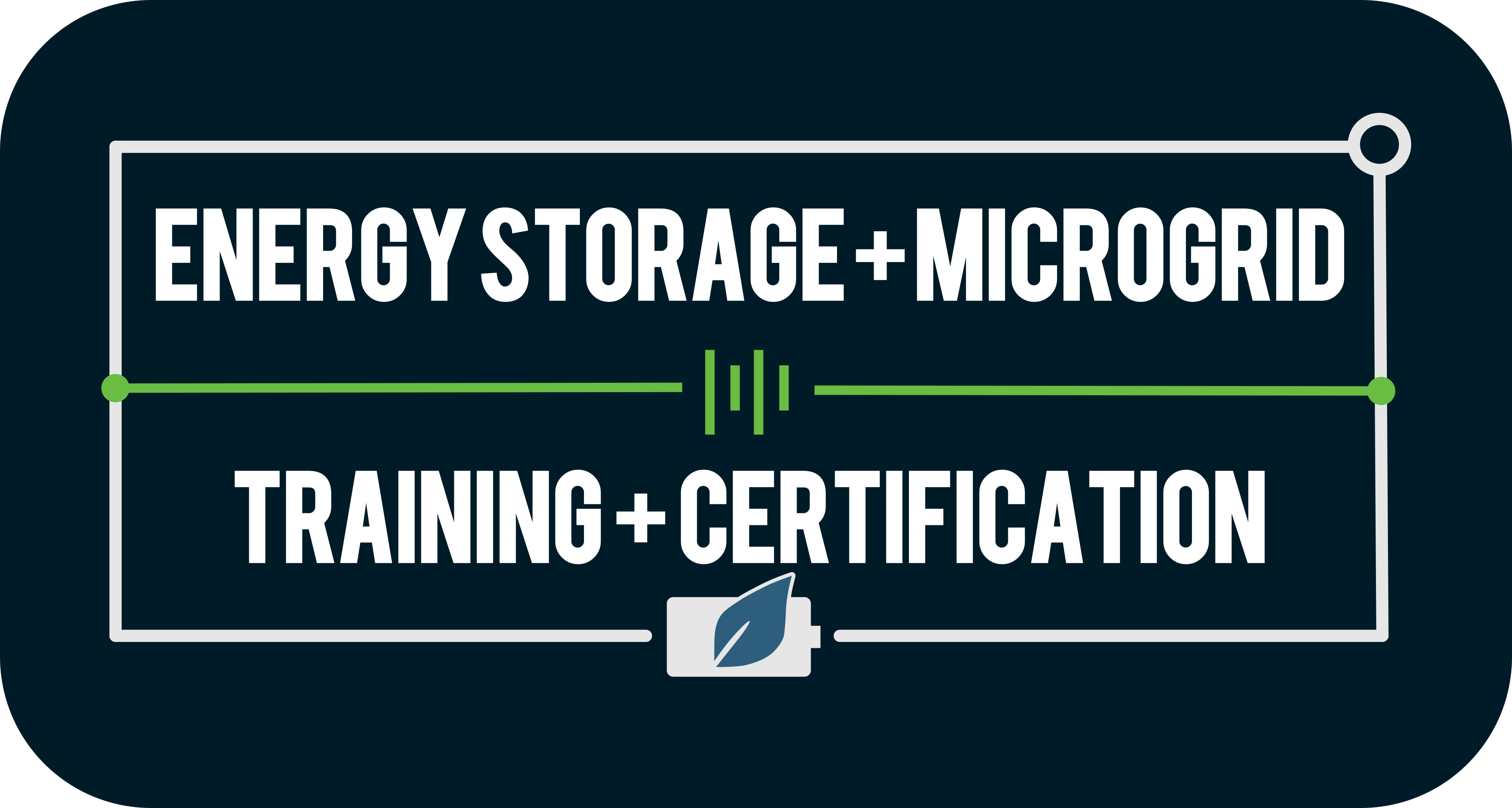This module explains the defining features of microgrids and provides examples of common applications for microgrids. It also provides an overview of the factors that are affecting the growing microgrid market, and the regional nature of this market.
Due to the significant contribution of energy storage systems (ESS) in the microgrid market, extensive descriptions of the services ESS can provide to the electric grid are also provided.
Watch Videos + Complete Quizes
This module focuses on the most common types of distributed energy generation systems that are used in microgrid systems.
A focus is placed on the application of various types of generation sources and the interconnection requirements of major types of equipment.
Topics include solar photovoltaic systems, inverters, and combined heat and power systems including reciprocating engines and gas turbines.
Watch Videos + Complete Quizes
This module examines energy storage systems commonly encountered in microgrid systems with an emphasis on battery technologies. The internal components, charge and discharge properties, and unique properties of lead acid and lithium ion (LI-Ion) are emphasized. Applications for less common energy storage technologies is also included (flow battery, capacitors, compressed air, and ice storage).
Watch Videos + Complete Quizes
This module focuses on the unique safety issues associated with Lead Acid and Li-Ion batteries.
Applicable codes governing safety are presented. Development of Job Hazard Analysis and use of personal protective equipment (PPE) are discussed.
The design and use of emergency action plans are discussed as an instrument to synthesize hazard analysis and safety planning.
Watch Videos + Complete Quizes + Perform Lab Activity
This module focuses on dc power systems including a review of Ohm’s law and calculations of voltage and amperage in dc circuits.
It discusses the common grounding configurations typically found in dc systems as well as pertinent code sections, how grounding affects electrical hazards, and the implications and causes of unintentional grounds.
The selection and use of dc meters and battery testing are also included and reinforced in laboratory activities.
Watch Videos + Complete Quizes + Perform Lab Activities
This module focuses on the types of controls and communications conductors and connections found in ESM Systems.
Topics include types of monitoring, controls, and communication systems found in ESM systems with an emphasis placed on the functions of battery management systems (BMS).
Types of conductors and connections are also discussed as well as the planning of installation of these systems with respect to the balance of assembly activities.
Due to the significant variability in these systems, an emphasis is placed upon interpretation of manufacturer specifications.
Watch Videos + Complete Quizes + Perform Lab Activities
This module provides an overview of the hierarchy of codes and standards that apply to ESM systems.
Subjects covered include the hierarchy of Codes and Standards, Rules for product certification, and safety, adoption and application of codes and standards, and workmanship.
An emphasis is placed on the distillation of key codes and standard in the creation of a method of procedure (MOP) for ESM system construction.
Watch Videos + Complete Quizes
Battery enclosures and racks serve as the physical platform on which batteries will be located. This module presents the key types and features of battery racks and enclosures. The need for specialty types of spill mitigation, ventilation, and fire protection for various types of chemistries is included. A review of rigging and hoisting procedures is also included due to the high density and risks associate with setting of large prefabricated battery enclosures.
Watch Videos + Complete Quizes
Modern energy storage and microgrid systems often utilize battery systems that require array assembly on site. Also, a need may arise for a single battery to be replaced in a system.
This module focuses on the planning and execution of battery installation into racking, from initial acceptance testing of batteries to loading of batteries in racks and enclosures in preparation for interconnection.
An emphasis is placed on the proper PPE, lifting procedures, and short-circuit/shock protection of this operation. As many ESM projects include scheduled replacement of batteries, the topic of battery disposal and recycling is also addressed.
Watch Videos + Complete Quizes + Perform Lab Activities
Battery energy storage systems typically comprise strings of batteries arranged in series, parallel, or series/parallel configurations in a racking structure.
This module focuses on the interconnection of individual battery units into strings, and the specialty hardware and measures required for proper connections, and the accumulation of voltage and hazards in workspaces as batteries are connected.
Workmanship issues are also addressed, including the preparation of terminals, use of anti-oxidation compounds, and proper torquing procedures.
Watch Videos + Complete Quizes + Perform Lab Activities
This module addresses the interconnection of energy storage and microgrid components using dc cabling. Unique features of dc cable are addressed including types of dc cable and the calculation of voltage drop.
Types and locations of over-current protection devices and disconnects are discussed and their relationship to their ac counterparts.
The planning of dc connections and the relationship of this process to the accumulation of hazards is discussed including the relationship of this sequence to order of operations and method of procedure.
The workmanship issues associated with dc cabling and terminations are also discussed, with an emphasis on fine twisted strand cable typically used in ESS.
Watch Videos + Complete Quizes + Perform Lab Activities
IMPORTANT NOTE: this course is provided for the purpose of auditing ESAMTAC. The full course provides instructor slides, lab instructions, handouts, discussion documents, and other supporting materials.
Please click play on the video below for a brief introduction to the navigating and completion of this course.
Click here for the: ESAMTAC Course Syllabus
© 2024. All rights reserved. Designed and built by ProtoGen, Inc.
